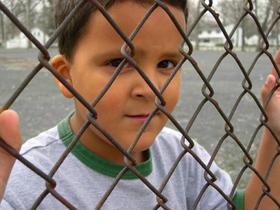For the 2025 school year, there are 2 public schools serving 89 students in the neighborhood of Willard Hay, Minneapolis, MN.
The neighborhood of Willard Hay, Minneapolis, MN public schools have an average math proficiency score of 50% (versus the Minnesota public school average of 45%).
Minority enrollment is 99% of the student body (majority Black), which is more than the Minnesota public school average of 39% (majority Black and Hispanic).
Best Public Schools in the neighborhood of Willard Hay, Minneapolis, MN (2025)
School
(Math and Reading Proficiency)
(Math and Reading Proficiency)
Location
Grades
Students
Rank: #11.
Plymouth Youth Center
Alternative School
(Math: <50% | Reading: <50% )
Rank:
Rank:
5/
Bottom 50%10
2210 Oliver Ave N
Minneapolis, MN 55411
(612) 643-2000
Minneapolis, MN 55411
(612) 643-2000
Grades: 9-12
| 74 students
Rank: n/an/a
Plymouth Youth Center Extended
Alternative School
2210 Oliver Ave N
Minneapolis, MN 55411
(612) 643-2000
Minneapolis, MN 55411
(612) 643-2000
Grades: 9-12
| 5 students
Frequently Asked Questions
What are the top ranked public schools in the neighborhood of Willard Hay, Minneapolis, MN?
The top ranked public schools in the neighborhood of Willard Hay, Minneapolis, MN include Plymouth Youth Center.
How many public schools are located in the neighborhood of Willard Hay, Minneapolis?
2 public schools are located in the neighborhood of Willard Hay, Minneapolis.
What is the racial composition of students in the neighborhood of Willard Hay, Minneapolis?
the neighborhood of Willard Hay, Minneapolis public schools minority enrollment is 99% of the student body (majority Black), which is more than the Minnesota public schools average of 39% (majority Black and Hispanic).
Recent Articles

Sexual Harassment at Age 6: The Tale of a First Grade Suspension
A six-year old in Aurora, Colorado, was suspended after singing an LMFAO song to a little girl in his class and reportedly “shaking his booty.” We look at the case and the sexual harassment problem in public schools today.

How Scaffolding Could Change the Way Your Child Learns
This article explores the concept of instructional scaffolding, a teaching method that enhances learning by breaking down complex tasks into manageable parts. It highlights how scaffolding supports students in developing critical thinking skills and becoming more independent learners. The article discusses the benefits of scaffolding, including improved engagement and reduced anxiety, and provides strategies for its implementation across various educational levels.

February 05, 2025
Understanding the U.S. Department of Education: Structure, Impact, and EvolutionWe explore how the Department of Education shapes American education, from its cabinet-level leadership to its impact on millions of students, written for general audiences seeking clarity on this vital institution.
